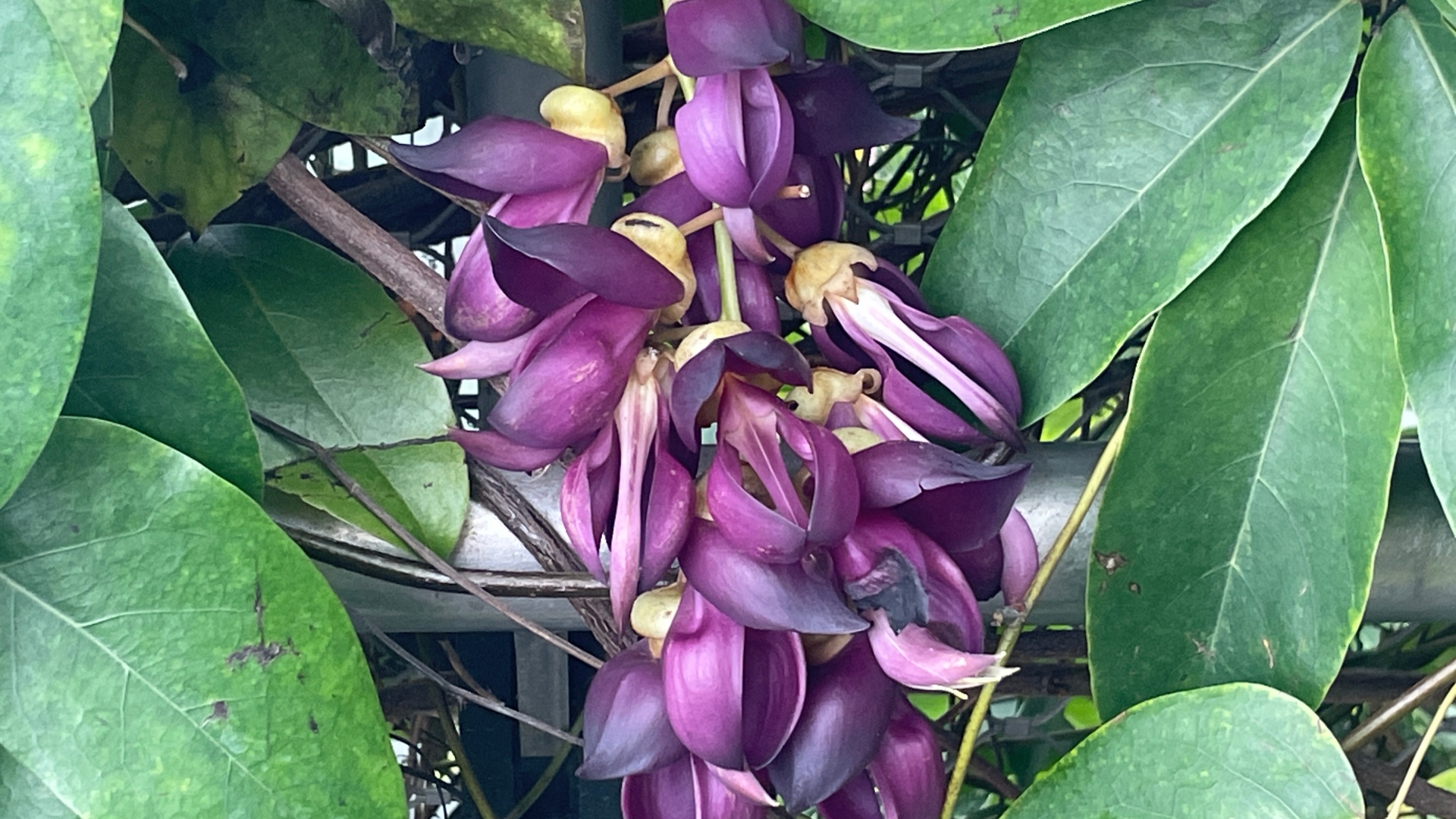The Exiled Paphiopedilum (Paphiopedilum exul)

Paphiopedilum exul was first reported in 1891 as Cypripedium insigne var. exul by Henry Nicholas Ridley, an English botanist, geologist and naturalist who lived much of his life in Singapore and who was also the first director of Singapore Botanic Gardens. In the following years, this orchid was identified and raised as a distinct and new species, Cypripedium exul, and in 1896, it was then transferred to the genus Paphiopedilum by Robert Allen Rolfe, an English botanist specialising in the study of orchids, who was the first curator of the Orchid Herbarium at Royal Botanic Gardens, Kew.
Why is it called ‘The Exiled Paphiopedilum’? Because its specific name, exul, means "exile" or "banished one" in Latin, as this slipper orchid was originally found on limestone cliffs in the Phuket-Krabi Gulf region in Peninsular Thailand, far from where most slipper orchids were originally found in the deep jungle of mainland Indochina, at that time. It seemed like an outlier, a wanderer separated from its kin. (But nowadays, we know that Paphiopedilum can actually be found throughout tropical Asia!)
Belonging to the family Orchidaceae and the genus Paphiopedilum, commonly referred to as the slipper orchids due to their distinctive pouch-like labellum or lip petal, Paphiopedilum exul is closely related to other species within its genus but is distinguished by its preference of limestone habitat with much stronger sunlight and relatively large fused lateral sepals that often can be seen extending behind the labellum when viewed from the front.
 The structure of a Paphiopedilum exul flower. The shield-like staminode is a modified and infertile anther, with the 2 fertile anthers hidden behind it. The lateral sepals are fused, and relatively large, thus can be seen in the front view (refer to first image for a better angle), while the lateral sepals of many other Paphiopedilum species are smaller and often completely blocked by the lip in the front view.
The structure of a Paphiopedilum exul flower. The shield-like staminode is a modified and infertile anther, with the 2 fertile anthers hidden behind it. The lateral sepals are fused, and relatively large, thus can be seen in the front view (refer to first image for a better angle), while the lateral sepals of many other Paphiopedilum species are smaller and often completely blocked by the lip in the front view.
The plant exhibits a compact growth habit with 4 to 5 linear, suberect, clear green, fleshy, glossy leaves that can reach up to 35 cm in length and 1.8 to 3 cm in width. It produces solitary flowers on a slender, upright stem measuring about 30 cm in length. The blooms are approximately 6.5 cm wide, featuring soft yellow-green sepals and petals, complemented by a creamy white, slipper-shaped lip adorned with subtle reddish markings. This unique floral structure aids in attracting and temporarily trapping pollinators, typically hoverflies or small bees, ensuring effective pollination.
In cultivation, Paphiopedilum exul prefers conditions that mimic its natural habitat. Growers should provide bright light, akin to its sun exposure in the wild, while avoiding direct midday sun to prevent leaf burn. A well-draining, humus-rich medium is essential, reflecting its preference for humus-filled rock crevices. Maintaining high humidity and consistent moisture is crucial, but care must be taken to avoid waterlogging, which can lead to root rot. Regular fertilization with a balanced, diluted orchid fertilizer during the growing season supports healthy growth and flowering.
Come to Orchid Haven in Cloud Forest and witness the flowers of Paphiopedilum exul in the captivating floral display “Orchids from the Land of Smiles”!
Zeke Chen, Manager (Conservatory Operations)
Ever since his tiny hands could hold on to a small toy shovel and sowed the first apricot seed in the garden, the passion for plants has started to grow in Zeke’s heart.

/2023-1000x1000-whatsblooming-raphiaaustralis-image01.jpg)

